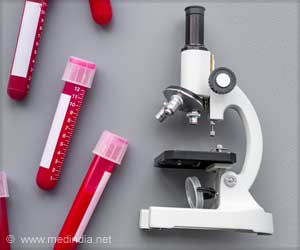
‘A newly developed advanced assay offers better sensitivity than currently available tests for detecting a prion disease.’
Tweet it Now
TSE surveillance is important for public health and food safety because TSEs have the potential of crossing from animals to humans, as seen with the spread of mad cow disease, or bovine spongiform encephalopathy (BSE). A study in The Journal of Molecular Diagnostics describes an advanced assay that offers better sensitivity than currently available tests for detecting a prion disease affecting elk. "The significance of TSEs on human health was not entirely realized until cases of variant Creutzfeldt-Jakob disease (vCJD) in humans had been discovered in the years following the BSE outbreak in the United Kingdom. These vCJD cases were associated with consuming meat products contaminated with BSE prions," explained lead investigator Stefanie Czub, of the Canadian BSE Reference Lab, Canadian Food Inspection Agency, Lethbridge Laboratory, Lethbridge, Alberta (Canada). "The result is that many countries have enacted TSE surveillance programs, aiming to eradicate livestock-related TSEs."
Surveillance programs rely on highly sensitive diagnostic methods to detect infections early. Addressing the need to define steadfast analytical performance criteria for prion amyloid seeding assays (ASAs), researchers developed a method to measure prion protein conversion time (from normal cellular form to prion form) by a combination of statistical analyses to obtain a prion-detecting ASA with a known degree of confidence. They compared the sensitivity of the new assay technique, the timed prion seeding assay (tASA), to other currently available tests (two bioassays in laboratory rodents and three commercially available TSE rapid tests).
The test samples came from elk brains infected experimentally with chronic wasting disease (CWD), a prion disease that affects cervids (hoofed ruminant mammals in the deer family). The investigators were able to define clear cut-off criteria, allowing determination of TSE-positive and TSE-negative states. Unlike TSE rapid tests, ASAs also have the potential to detect and measure TSE infection in blood, saliva, or urine. This would offer clinical advantages, such as the ability to sample blood instead of relying on more invasive tissue biopsy and to screen blood donations for contamination.
"We found that the tASA was at least as sensitive as two rodent bioassays and up to 16 times more sensitive than three different TSE rapid tests," noted lead author John G. Gray, Canadian BSE Reference Lab, Canadian Food Inspection Agency. "This study should further advance ASAs as recognized prion detection systems. We believe this methodology represents the future for prion diagnostics, especially concerning human health, for example in screening blood donations."
Advertisement
"This study represents an important first step for the tASA diagnostic protocol to gain regulatory approval for its use in TSE surveillance programs targeting CWD in cervids," commented noted authority Holger Wille, of the University of Alberta Department of Biochemistry and Centre for Prions and Protein Folding Diseases in Edmonton, Alberta (Canada). "Additional work will also be needed to fine-tune and test tASA for the detection of prions in peripheral organs and environmental samples, which represent a substantial unmet need to track the spread of CWD prions among North America cervids as well as in the environment."
Advertisement










